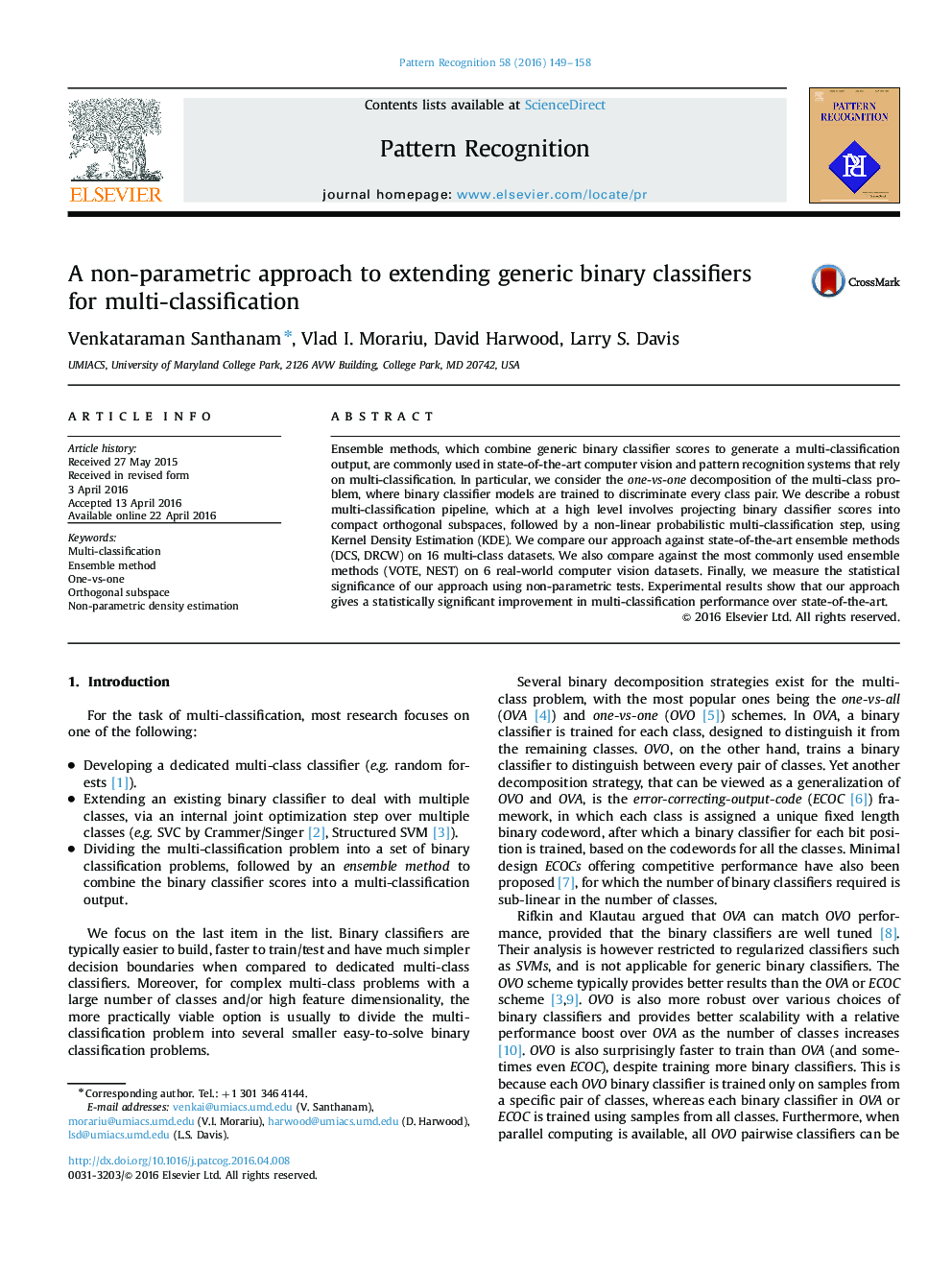| Article ID | Journal | Published Year | Pages | File Type |
|---|---|---|---|---|
| 533123 | Pattern Recognition | 2016 | 10 Pages |
•Ensemble methods combine binary classifiers to yield a multi-classification output.•One-vs-one ensemble: binary classifiers trained to discriminate each class pair.•We propose a robust non-parametric probabilistic one-vs-one ensemble method: KDEMRP.•KDEMRP improves classification performance over state-of-the-art (DCS, DRCW).•KDEMRP improvements are statistically significant.
Ensemble methods, which combine generic binary classifier scores to generate a multi-classification output, are commonly used in state-of-the-art computer vision and pattern recognition systems that rely on multi-classification. In particular, we consider the one-vs-one decomposition of the multi-class problem, where binary classifier models are trained to discriminate every class pair. We describe a robust multi-classification pipeline, which at a high level involves projecting binary classifier scores into compact orthogonal subspaces, followed by a non-linear probabilistic multi-classification step, using Kernel Density Estimation (KDE). We compare our approach against state-of-the-art ensemble methods (DCS, DRCW) on 16 multi-class datasets. We also compare against the most commonly used ensemble methods (VOTE, NEST) on 6 real-world computer vision datasets. Finally, we measure the statistical significance of our approach using non-parametric tests. Experimental results show that our approach gives a statistically significant improvement in multi-classification performance over state-of-the-art.
